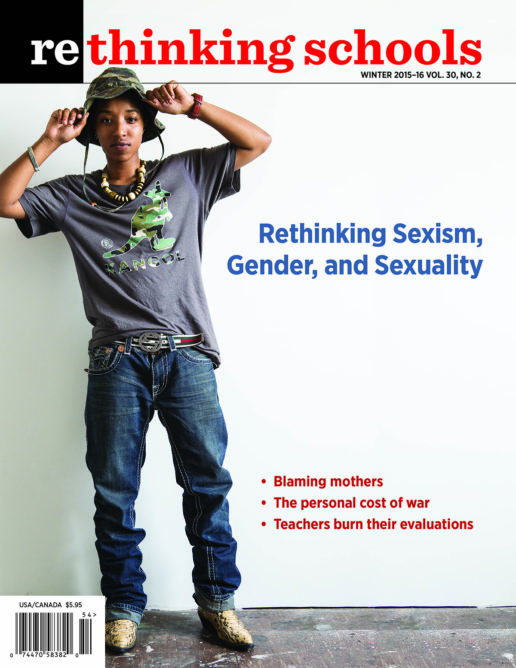Preview of Article:
Cracking the Box
The personal cost of war
Illustrator: Michael Duffy
“You don’t have to do this,” my wife Lisa says, as I carry the plastic box containing what’s left of my father’s things up from our dimly lit basement and into the bright light of the living room.
“I know,” I reply reassuringly, continuing out the front door to place the box gently into the back of my car.
It’s that time of year again, and I know Lisa’s been sensing my uneasiness all day. Tomorrow morning, in my high school classroom, my students and I will begin exploring the personal cost of war. We will read Tim O’Brien’s short story “The Things They Carried,” and discuss the literal and metaphoric weight so many soldiers “humped” across the battlefields of the central highlands of Viet Nam. We will write and talk about our own physical and emotional baggage. We will make lists of all the things we know or think we know about the war in Viet Nam. And then I will open that box and hope that I can keep it together long enough to make a very important point: War is not something that happens elsewhere to other people, and it’s certainly not something that ends once all the treaties have been signed, and the soldiers make their long journeys home. War is a thing that’s carried forward, out of the shadowy past and into the bright light of the present by each and every person touched by it. And sometimes it is carried into the florescent light of high school classrooms by teachers who feel a responsibility to share their personal experience, their lingering questions, and their increasing discomfort with the catastrophic decisions our nation continues to make.
War Is Hell
We have a dysfunctional relationship with war. We both praise and condemn it, often simultaneously. “War is hell,” our hero mutters before trudging stoically into battle and doing his patriotic duty. War is scary and war is exciting; war is atrocious and war is glorious, war is pure evil and war is a profound necessity for our national freedom. On any given day, high school teenagers may sit in a darkened classroom watching a black-and-white rendition of the My Lai massacre, and then at lunch speak sunnily with a Marine recruiter emblazoned with all the über-masculinity embodied by his dress blues.
This troubles me. For all our good intentions—and all our creative attempts to soothe anger and mitigate violence—most schools send an embarrassingly mixed message when it comes to war. We teach the numbers and we teach the facts, but do we teach the true cost of this most violent of human acts? Beyond the dates, the battles, the multidimensional causes, the geopolitical fallout, and the socio-economic effects, do we teach that at the epicenter of every war lies death, destruction, and deep human suffering? And, as educators, are we doing enough to prepare our students, who stand at the threshold of this stunning reality, for the awesome responsibility, brute impact, and devastating finality of this national obsession?

